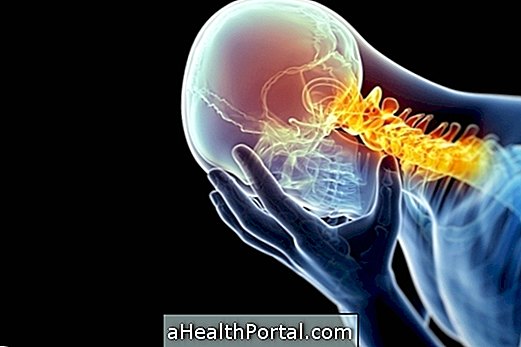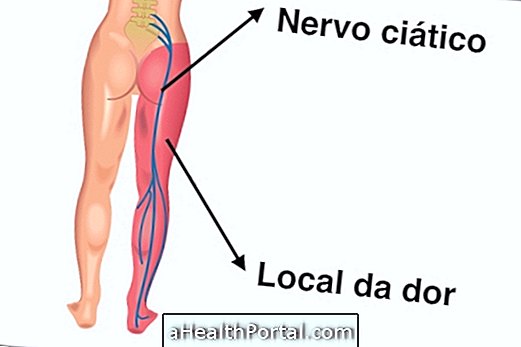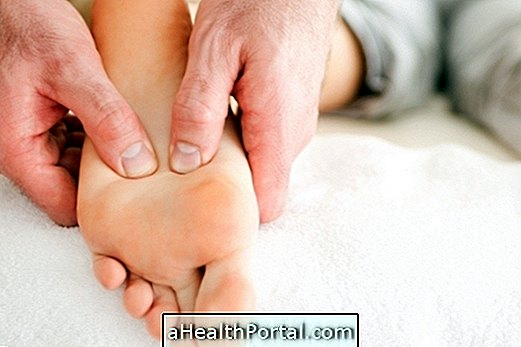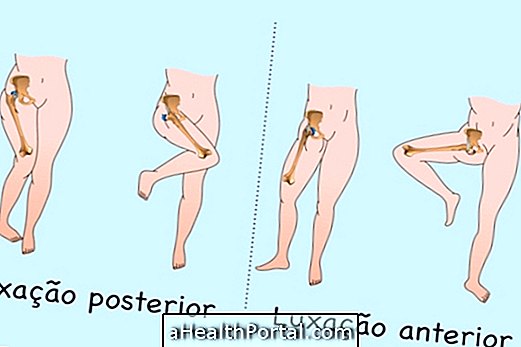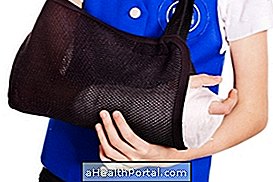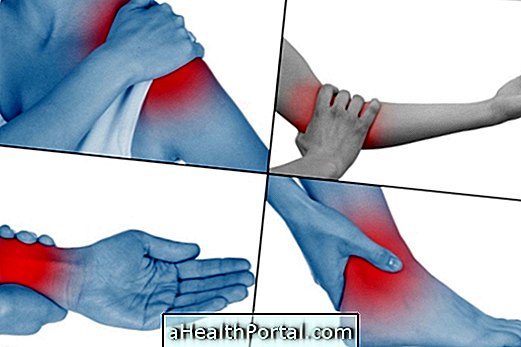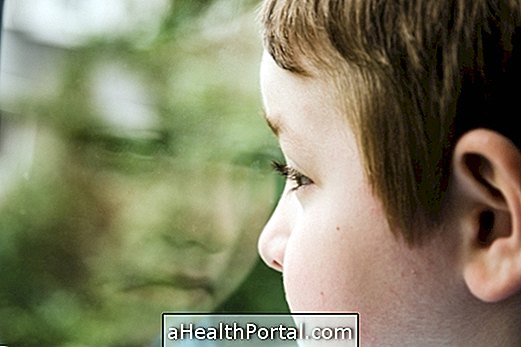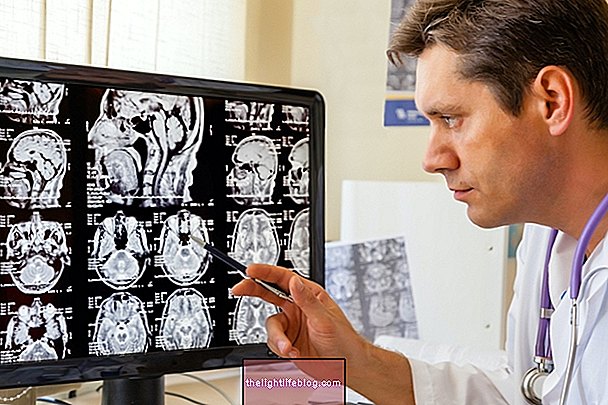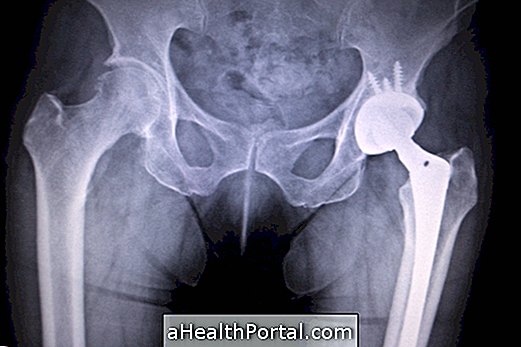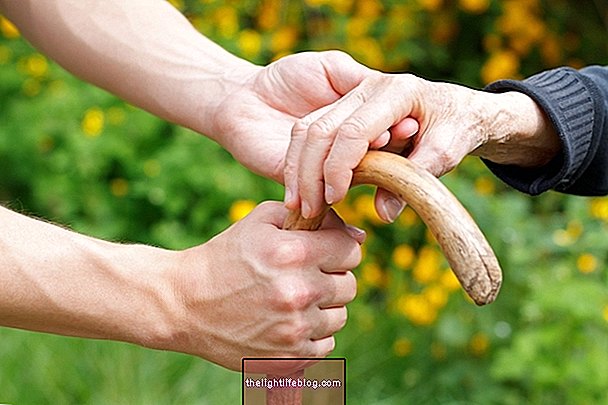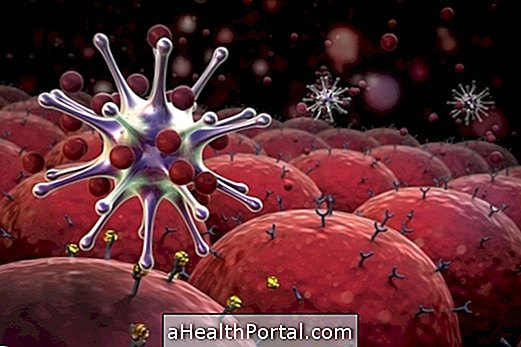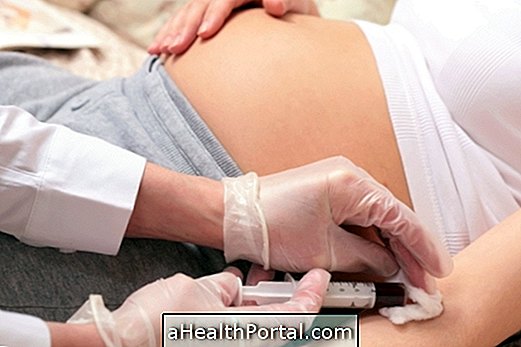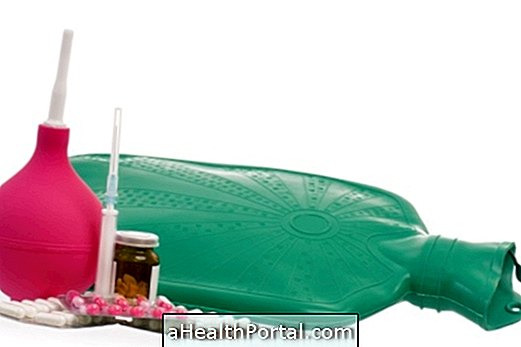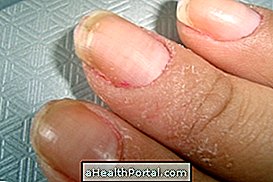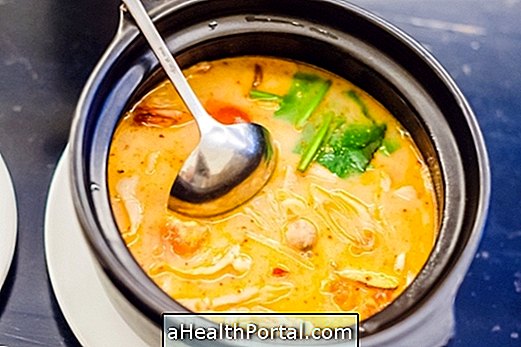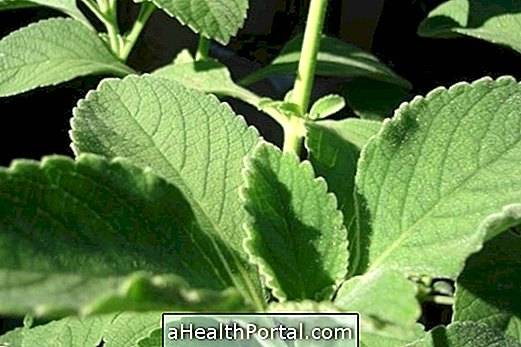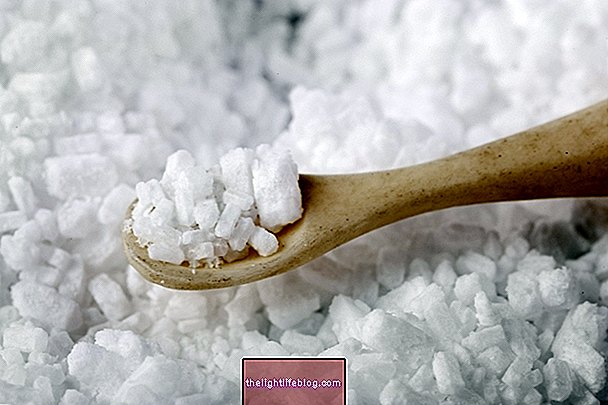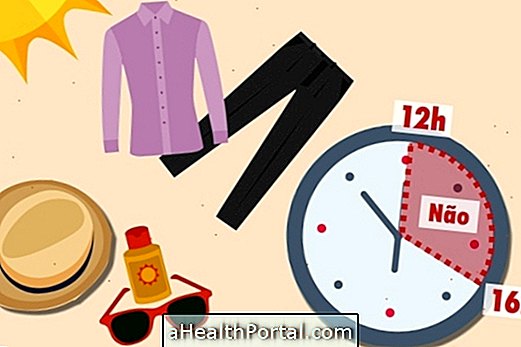Spinal pain is very common and usually improves in a few weeks or months. This type of pain can be associated with different causes such as poor posture, repetitive efforts and also more serious problems such as herniated discs, fractures or tumors. The type of back pain also varies according to the affected region.
The treatment of pain in the spine depends on the type and location of the pain and can be done with anti-inflammatory drugs or muscle relaxants, physical therapy or hydrotherapy and, in the most severe cases, surgery. In milder situations, changes in lifestyle habits such as light physical activity, relaxation and weight loss can often alleviate symptoms.
Spinal pain should never be ignored and only the orthopedic doctor can make the diagnosis and indicate the most appropriate treatment. It is important not to do any physical exercise without first consulting a doctor.

1. Pelvic imbalance
The pelvis is the structure that connects the trunk to the lower limbs, being very important for postural balance. Any imbalance in the pelvis, such as muscle weakness and difference in size of the lower limbs, can cause muscle instability and cause poor posture leading to spinal injury, back pain or herniated disc.
The most common causes for pelvic imbalance are shortening of the pelvis muscles, overweight and obesity and also pregnancy.
What to do: in the case of pelvic imbalance, the best treatment is prevention by strengthening the muscles of the pelvis. Thus, stretching and pilates, or even insoles, are recommended. In the case of acute pain, physiotherapy or hydrotherapy are recommended to strengthen the muscles and reduce pain, in addition to the use of analgesics and anti-inflammatory drugs.
2. Sedentary lifestyle and smoking
Some less healthy habits, such as physical inactivity and smoking, are also common causes of back pain. Sedentary lifestyle, for example, increases the risk of developing back pain due to weakening of the abdominal, pelvic and back muscles and is usually associated with low back pain.
Smoking, on the other hand, contributes to the wear of the intervertebral discs leading to friction between the vertebrae and muscle inflammation, which results in pain in the spine.
What to do: you should choose healthy lifestyle habits and move your body to strengthen your back muscles. Thus, physical exercises oriented to work the muscles are recommended, such as swimming, RPG (Global Postural Recovery), pilates, stretching or yoga. See 5 tips to combat sedentary lifestyle.
3. Obesity
Obesity and being overweight are major causes of back pain. The pain occurs due to weight overload in the vertebrae of the spine and also in the joints such as knees and hips. In addition, obesity causes inflammatory processes throughout the body, degeneration of the vertebral discs and reduces blood flow in the spine due to atherosclerosis. In this case, back pain is usually associated with low back pain.
What to do: in the case of obesity, follow-up with an orthopedic doctor is recommended for the use of medications such as anti-inflammatories and physiotherapy to reduce pain. In addition, losing weight is essential for the health of the spine and for the body as a whole, and for this, it is recommended to follow up with a nutritionist and endocrinologist. Check out a fast and healthy weight loss diet.

4. Wrong posture
The correct posture allows the balance between the muscles and the bones, when this does not happen, structural changes in the spine can happen, as well as stiffening of the joints and shortening of the muscles. Poor posture can cause low back pain, pain in the middle of the back and neck pain. Learn more about the pain caused by poor posture.
What to do: in this case, it is best to try to maintain the best possible posture in everyday activities. When carrying out domestic activities, it is important to avoid working with the trunk fully tilted. At work, it is recommended to keep your forearms flat on the table, sit correctly, keeping your feet flat on the floor and with your spine straight. At bedtime, you should lie on your side and put a pillow on your head and another between your legs. Check out 5 tips to achieve the correct posture.
5. Repetitive efforts
Work that requires very intense repetitive physical efforts can cause tensions or muscle injuries causing pain in the spine in the region related to the area of effort. Some professions place a higher risk of back pain due to repetitive efforts such as construction workers, mechanics and nurses, for example.
What to do: the ideal is to avoid carrying very high weights. If this is not possible, you should share the weight, use a cart or ask a colleague for help. Stretching before starting work is also important because it helps to prepare your muscles for work. Check out the best stretches for back pain.
6. Excessive stress
Stress is a physical and emotional way of reacting to everyday events. In situations of excess stress, the body releases hormones into the bloodstream, such as cortisol, which can cause muscle stiffness or tension. Thus, pain in the spine, especially in the lumbar, may be related to stress.
What to do: It is important to have a medical evaluation to eliminate other causes of pain. In addition, follow-up with a psychologist can help identify and resolve the cause of stress. Seek to do activities that give pleasure such as walking, painting, yoga, for example, help to reduce stress. Check out 7 tips to control stress.

7. Fibromyalgia
Fibromyalgia is a chronic pain condition in which the person is more sensitive to pain in various parts of the body. There is no specific cause, however, some conditions such as stress and poor sleep quality can trigger fibromyalgia, causing muscle stiffness, which is one of the causes of back pain that can occur in any region of the spine.
What to do: the treatment of fibromyalgia should be done with antidepressants and analgesics indicated by the doctor. In acute pain, physical therapy helps to relax the muscles and control the pain. Changes in lifestyle, such as having a balanced diet and practicing physical activities indicated by the doctor or physical educator, allow you to reduce stress and improve sleep, which helps to prevent the onset of pain. Learn more about fibromyalgia and how to relieve symptoms.
8. Herniated disc
Herniated discs occur when the lining of a vertebral disc suffers damage such as rupture, causing pain in the spine. When this occurs, the contents inside the vertebral disc can overflow and cause nerve compression, which leads to pain in the legs or arms, depending on the affected region. Herniated disc is more common in the lower back, but it can also occur in the neck region. Learn more about herniated discs.
What to do: Symptoms of herniated discs can disappear in 1 to 3 months. However, pain can be controlled with analgesics and anti-inflammatory drugs prescribed by the doctor, physiotherapy, osteopathy and exercises indicated by the physiotherapist to realign the spine and strengthen the muscles. Although little indicated, in some more severe cases, surgery may be necessary.
9. Ankylosing spondylitis
Ankylosing spondylitis is an inflammation of the spine, large joints and toes and hands. It is a form of arthritis in the spine more common in men than in women. The pain in the spine is usually worse at night and in the morning, due to the stiffness of the spine musculature.
What to do: you should consult an orthopedist or rheumatologist to start the most appropriate treatment, which is usually done with anti-inflammatories, analgesics and muscle relaxants, in addition to rehabilitation techniques that improve mobility and help with pain control. See how the treatment for ankylosing spondylitis is done.

10. Scoliosis, kyphosis or lordosis
Scoliosis is the abnormal curvature of the spine that usually occurs in childhood and, when not diagnosed and treated, can cause pain in the spine.
Kyphosis is the arching of the spine, also known as the hump. Some factors can cause kyphosis such as carrying excessive weights, poor posture, excessive physical exercise and excessive use of the cell phone. In addition, osteoporosis, trauma and tumors can also cause kyphosis.
Lordosis, like kyphosis, is the arch of the spine, but the curvature is into the spine. The causes are varied as obesity, osteoporosis and infections in the vertebral discs, for example.
What to do: the treatment of scoliosis, kyphosis and lordosis is physiotherapy, RPG or pilates to strengthen the spine and muscles. In some cases, it may be necessary to use orthopedic vests or insoles to keep the spine in the proper position. In cases of acute pain, anti-inflammatory drugs and analgesics prescribed by the doctor can be used.
Was this information helpful?
Yes No
Your opinion is important! Write here how we can improve our text:
Any questions? Click here to be answered.
Email in which you want to receive a reply:
Check the confirmation email we sent you.
Your name:
Reason for visit:
--- Choose your reason --- DiseaseLive betterHelp another personGain knowledge
Are you a health professional?
NoMedicalPharmaceuticalsNurseNutritionistBiomedicalPhysiotherapistBeauticianOther
Bibliography
- CHOU, Louisa; BRADY, Sharmayne R.E .; URQUHART, Donna M .; et al. The Association Between Obesity and Low Back Pain and Disability Is Affected by Mood Disorders. Medicine (Baltimore). 95. 15; e3367, 2016
- CHUN, Sungyung; JEON, Kyoungkyu. Effects of Muscle-Strengthening Intervention Exercise on Pain Alleviation and Postural Control in Patients with Chronic Low Back Pain. Iran J Public Health. 48. 1; 171-172, 2019
- SMITH, Judith A .. Update on Ankylosing Spondylitis: Current Concepts in Pathogenesis. Curr Allergy Asthma Rep. 15. 1; 489, 2015
- FALEIRO, Lilian Resende; ARAÚJO, Lúcia Helena Resende; VARVALHO, Maurilio Antonio. Anti-TNF-α Therapy in Rheumatoid Arthritis. Semina: Biological and Health Sciences. 32. 1; 77-94, 2011
- SHAKIL, Halima; IQBAL, Zaheen A .; AL-GHADIR, Ahmad H .. Scoliosis: review of types of curves, etiological theories and conservative treatment. J Back Musculoskelet Rehabil. 27. 2; 111-115, 2014
- LAM, Jason C .; MUKHDOMI, Taif. Kyphosis. Treasure Island (FL). 2020
- CHINN, Steven; CALDWELL, William; GRITSENKO, Karina. Fibromyalgia Pathogenesis and Treatment Options Update. Current Pain and Headache Reports volume. 20. 4; 20-25, 2016
- BI, Xia; ZHAO, Jiangxia; ZHAO, Lei; et al. Pelvic floor muscle exercise for chronic low back pain. J Int Med Res. 41. 1; 146-152, 2013
- MAHER, Chris; UNDERWOOD, Martin; BUCHBINDER, Rachelle. Non-specific low back pain. The Lancet. 289. 736-747, 2017
